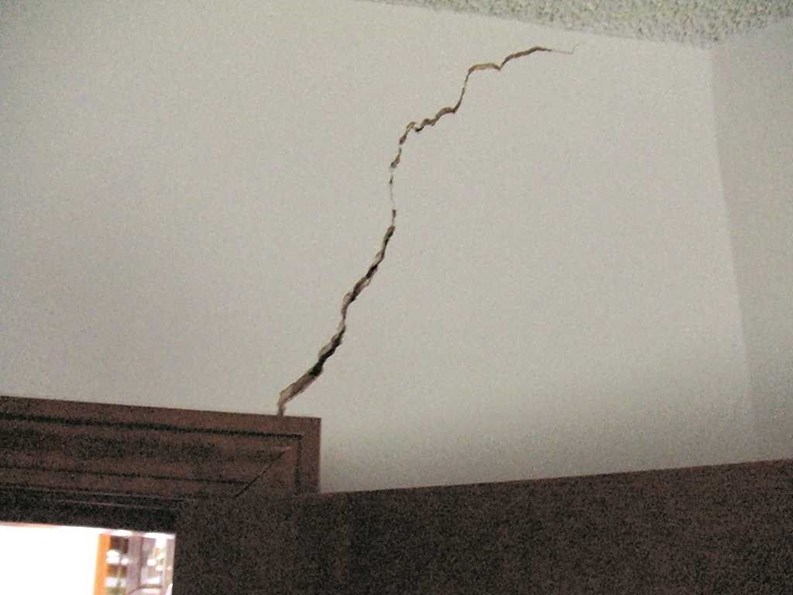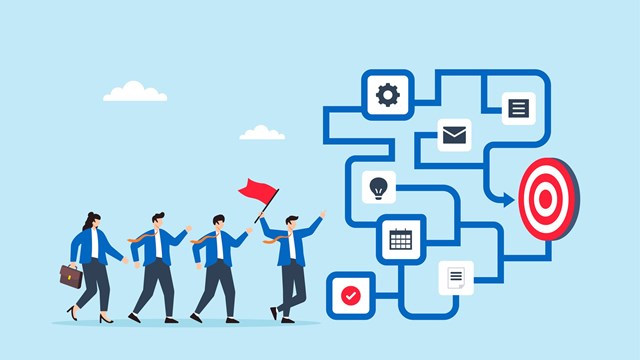Many people dream of a place to call their own, and thanks to a rebounding housing market and a birth of new developments under construction, shiny new condominiums await. However, despite the appeal of a new condo development—such as wireless Internet, top-of-the-line appliances, ultramodern fixtures and finishes—often times unforeseen problems arise. These can be leaks, drafts, mechanical problems or even electrical issues.
John E. Shaffer, an associate attorney with the law firm of Marcus, Errico, Emmer & Brooks in Braintree, Massachusetts, whose practice focuses on construction law, contracts and environmental law, represents numerous community associations where he has seen a lot of common area problems develop in new developments: issues with roofs, walls, windows and water infiltration.
“I do see a focus more on what’s inside the unit (the bells and whistles), and the more common areas aren’t getting the scrutiny from potential owners,” he says. “I wouldn’t say it’s rampant and it’s not that people are cutting corners, but less attention is being placed on how things are constructed.”
Ultimately, Shaffer says, the developer is responsible. There are mainly reputable developers throughout New England, but when a developer is not reputable, there are usually both physical as well as fiscal problems.
Henry A. Goodman, a partner with the law firm of Goodman, Shapiro & Lombardi, LLC in Dedham, Massachusetts, says sometimes even reputable developers may have created physical problems due to design defects or less than sterling subcontractors.
“Most physical problems are related to roof, siding, basement and window leaks as well as settling and drainage problems,” he says. “These are the most common, although almost anything can be defective.”
Jack Carr, PE, RS, LEED AP, senior vice president of engineering at Criterium Engineers, headquartered in Portland, Maine, says the two most common problems he sees in new condo complexes are water infiltration and pavement problems.
“The water infiltration appears most often around windows and foundation cracks,” he says. “The pavement problems are mostly associated with poor underlying soil compaction resulting in cracked pavement; manhole/catch basin settlement; and poor drainage creating erosion and ice/ponding problems.”
Taking Responsibility
The building department of each state will have codes that need to be followed.
There’s no one reason behind shoddy construction. Some buildings may be built too quickly, some developers may cut corners on labor, or on the materials you can’t readily see, and standards are just not as high as they were in the ‘good ole days.’
“In general, the majority are due to lax oversight of subs who are cutting corners,” Goodman says. “Sometimes it is the developer itself. Sometimes there are design defects. Often, it is merely incompetence.”
According to Goodman, in Massachusetts, there are state building codes and health codes usually overseen by building inspectors who are often overworked and have no liability if they make a mistake. Thus, things sometimes get overlooked until it is too late and the responsible party is sometimes hard to determine.
“As most developers are single purpose entities such as a limited liability company or a corporation to build one specific project, much depends on when the defect is noticed and acted upon,” Goodman says. “The individual that we often identify as the developer may only be a shareholder or officer of an entity that is the developer. If the project is already sold out and the entity has dispersed its funds and dissolved, there may be little that can be done.”
Taking Action
That’s not to say that taking it to task is impossible in all cases. If the developer is still viable and has assets, there are many possibilities.
For a unit owner, the first avenue for remedy is the developer through the sales contract; parts/equipment manufacturer; and implied warranties. If this proves less than satisfactory, then working through the newly formed owner’s association board is the next option.
“As to infrastructure, the developer may have posted a bond for proper completion. If that is the case and the problem is with infrastructure, the municipality, if it has not returned the bond, can apply it to finishing or correcting the job,” Goodman says. “If there is a violation of code, the municipality may be able to seek fines.”
The usual remedy is that a claim is made against the developer and if not settled, there could be litigation. The party responsible to the association is the developer. The subcontractors are answerable to the developer.
According to Carr, if the problems are common to other units, and they often are, then a transition study is in order.
“The board can hire an engineering firm specializing in performing transition studies whose purpose is to develop an inventory of the condo complex’s problems; establish a priority list; and estimate a cost of repair for each issue,” he says. “The results of this study are then presented to the developer for resolution. If the response is unsatisfactory, it may be time to hire a lawyer skilled in condo law to expedite a settlement.”
On some large condo projects it may also be wise to hire a forensic accountant to study the developer’s book to ensure a proper handling of the operating and reserve fund accounts during the transition period between the initial unit sales and the establishment of a formal board controlled by the unit owners.
One thing all our experts agree on: A board should never undertake the development of a reserve fund budget until the responsibilities of future repairs by the developer are well understood.
Shaffer says that action should be taken against the developer and it’s up to him to bring in the secondary parties, like the contractor.
Getting the Lawyers Involved
Richard D. Vetstein, founding partner of Vetstein Law Group, P.C. in Framingham, Massachusetts, says that in Massachusetts, anyone who performs defective or shoddy work on a condominium project can be held liable.
“The general contractor is responsible for the work of subcontractor so the general will get sued along with the subs,” he says. “Typically, the recourse is through a private civil lawsuit brought by the condominium trustees and/or unit owners. If the construction is really terrible and a public safety issue with code violations, the builder/developer could face potential criminal action by state regulators.”
There could also be disciplinary action taken against their licenses. This, however, is very rare.
Buyers stuck with a “lemon” will certainly be able to sue the developer, general contractor and subcontractors. The outermost statute of limitations in Massachusetts for bringing such a case is six years from the date of substantial completion of the unit. After that, the unit owner is generally on his or her own.
“In Massachusetts, new construction now carries with it an implied warranty of fitness and workmanship, giving victims some additional remedies,” Vetstein says. “There is also the Massachusetts Consumer Protection Act which can impose triple damages and attorneys’ fees against developers/builders for shoddy work.”
In particularly bad cases, the unit owner can file complaints with the Attorney General’s Office, but prosecution is rare for these types of situations. The buyers can also make claims against the condominium master insurance policy for damages.
If something starts to go awry inside a condo unit, Goodman says that if it is still within the warranty period, the owner should follow the notification method set forth in the warranty. The owner should also send a letter to the condominium board setting forth what the problem is.
“The board owes a duty to repair the common areas. If the association is still in the hands of the developer-appointed board, the owner may get no satisfaction,” Goodman says. “The developer may give lip service to the owner and may attempt ‘Band-aid’ repairs rather than make permanent fixes.”
Under Massachusetts law, the fact that there is no independent board does not stop the statute of limitations from running out. There is an attempt to change that, but for now, the statute continues to run.
“Therefore, it is incumbent on an owner to take timely action, which, unfortunately, may involve expenses for an engineer, an attorney and contractors,” Goodman says. “However, the owner may have a claim not only against the developer but also against the trustees, perhaps individually. Further, to the extent that the defects may be endemic and the suit alleges that it is brought on behalf of the association because the board is not performing its duties, there is a possibility, discretionary with the court, that the owner may be awarded some or all of his/her attorney’s fees and costs.”
A suit must be filed within three years of when the defect was discovered or should have been discovered and, in the case of design professionals, no later than six years from when it was created in claims for negligence. Most warranty claims have a limitation of three years from when it was discovered or should have been discovered but no later than six years.
Inspecting the Premises
The problem with coming into a new place is that a thorough investigation would have to involve destruction. For example, to see if there is mold between the interior and exterior wall would necessitate opening one of those walls. Therefore, one cannot find everything.
“You are well advised to get a home inspection and to some extent, they will check the common areas and get some ideas if there are issues,” Shaffer says. “Most of the time, unfortunately, problems are in the construction.”
Goodman recommends the following things to look for to search for trouble spots: “Are they mere ‘settling cracks’ or signs of improper compacting of soils beneath the building? Is there a musty odor? Are there signs of dampness such as a powdery substance on the basement walls? Are there black or green or blue-grey patches in the basement or the attic, signifying potential mold?”
Keep in mind that problems are nothing new. Before technological advances and mass construction, artisans were responsible for a lot of residential construction and buildings leaked energy and were inefficient. In more modern times, building envelopes were tightened up to prevent water and energy leaks, so much so that humidity got trapped and mold ensued. In short, each era has its problems and it’s just up to you to avoid being a victim.
Keith Loria is a freelance writer and a frequent contributor to New England Condominium. Associate Editor Pat Gale contributed to this article.







Leave a Comment